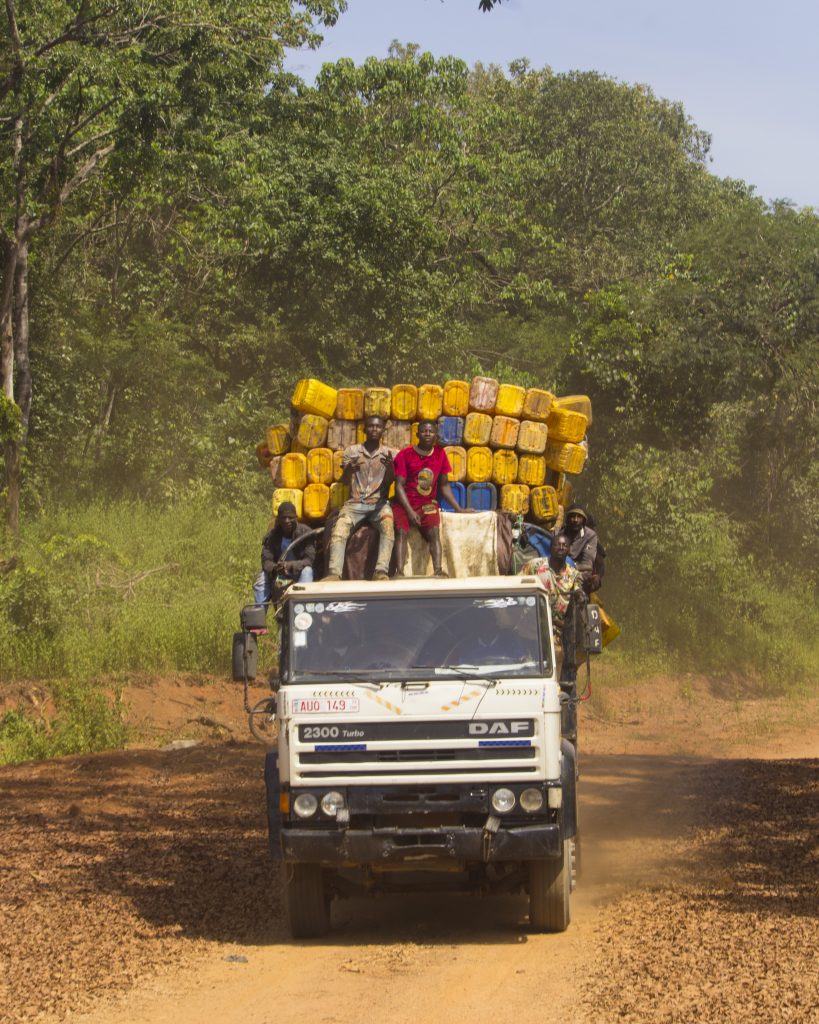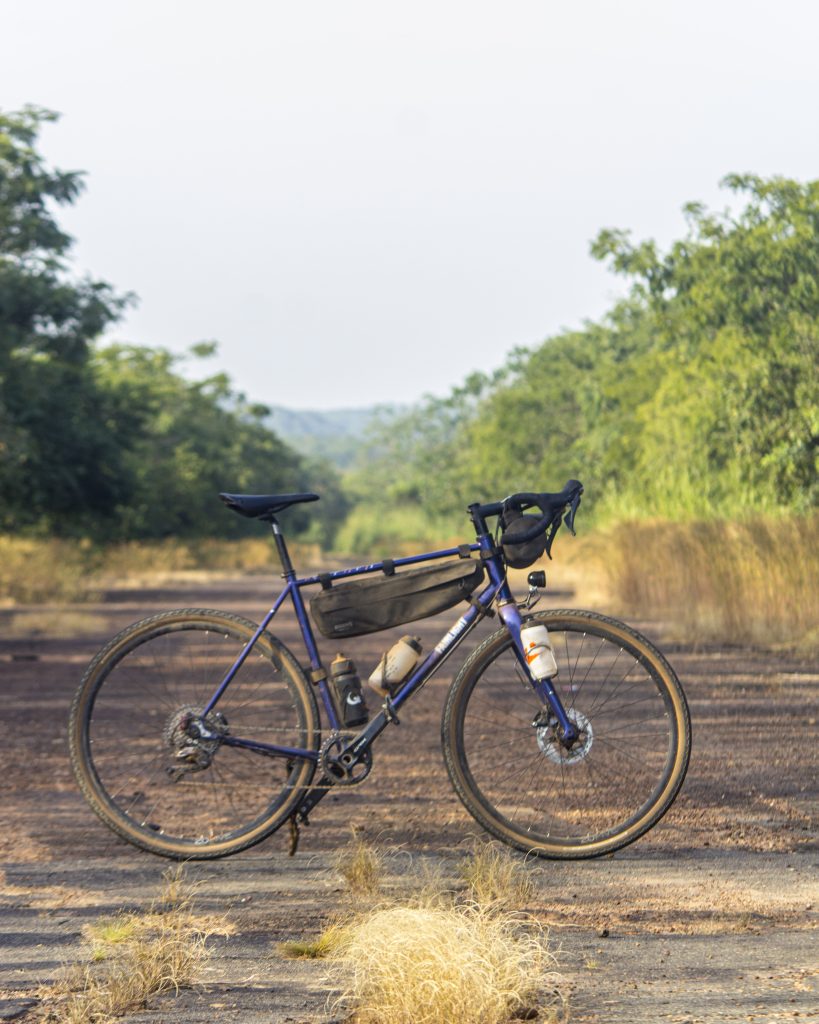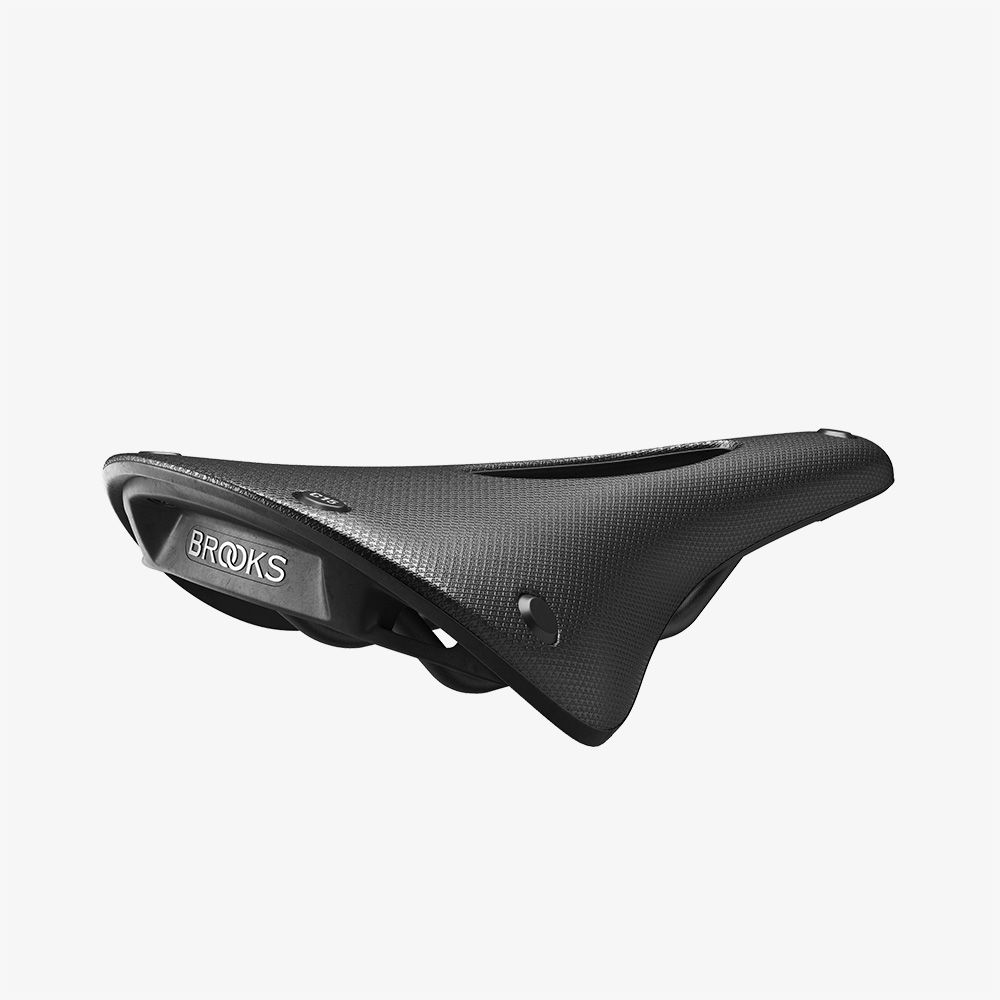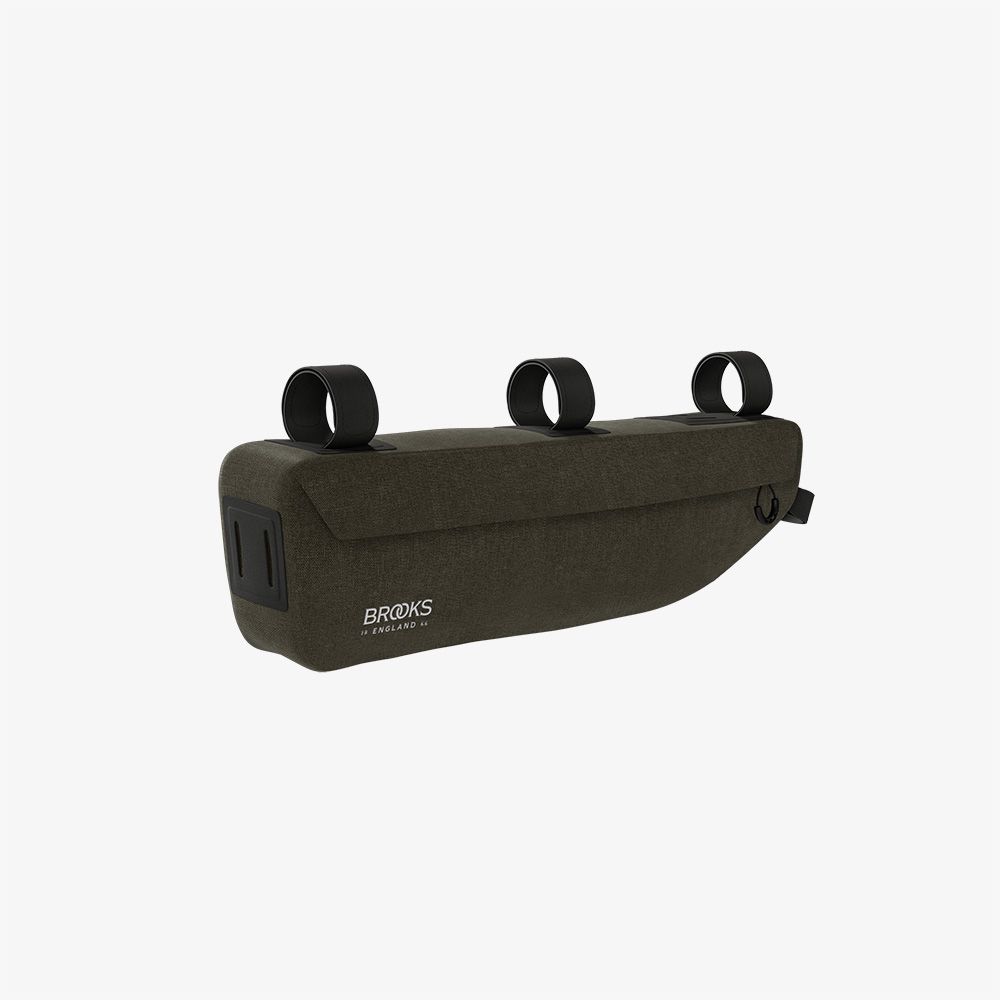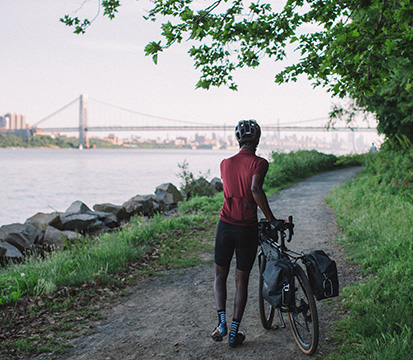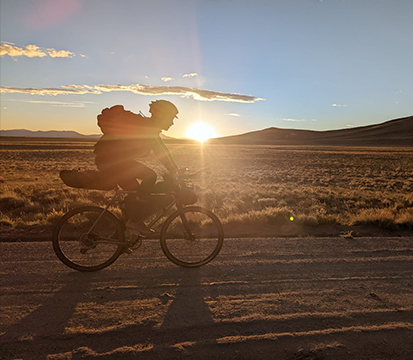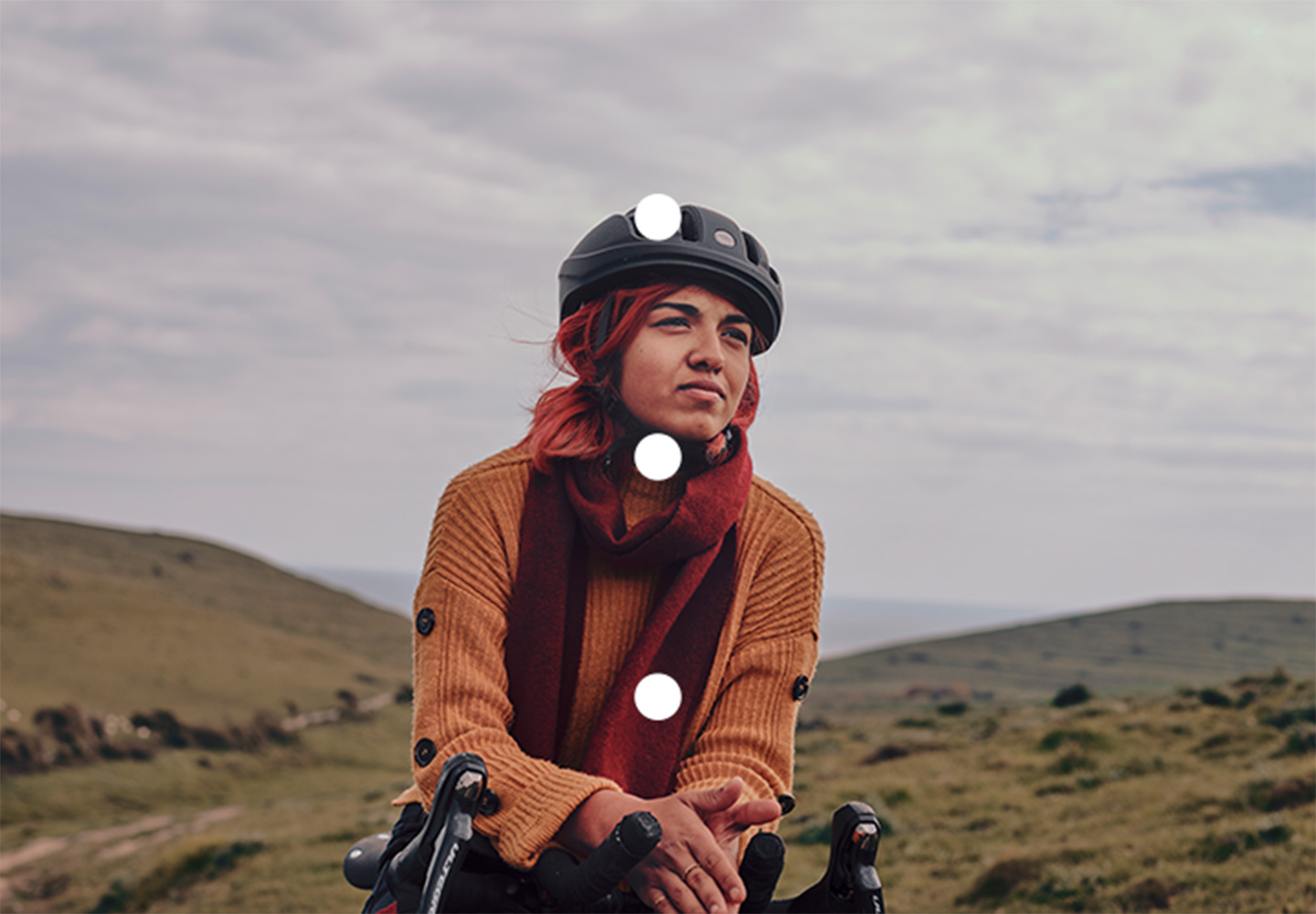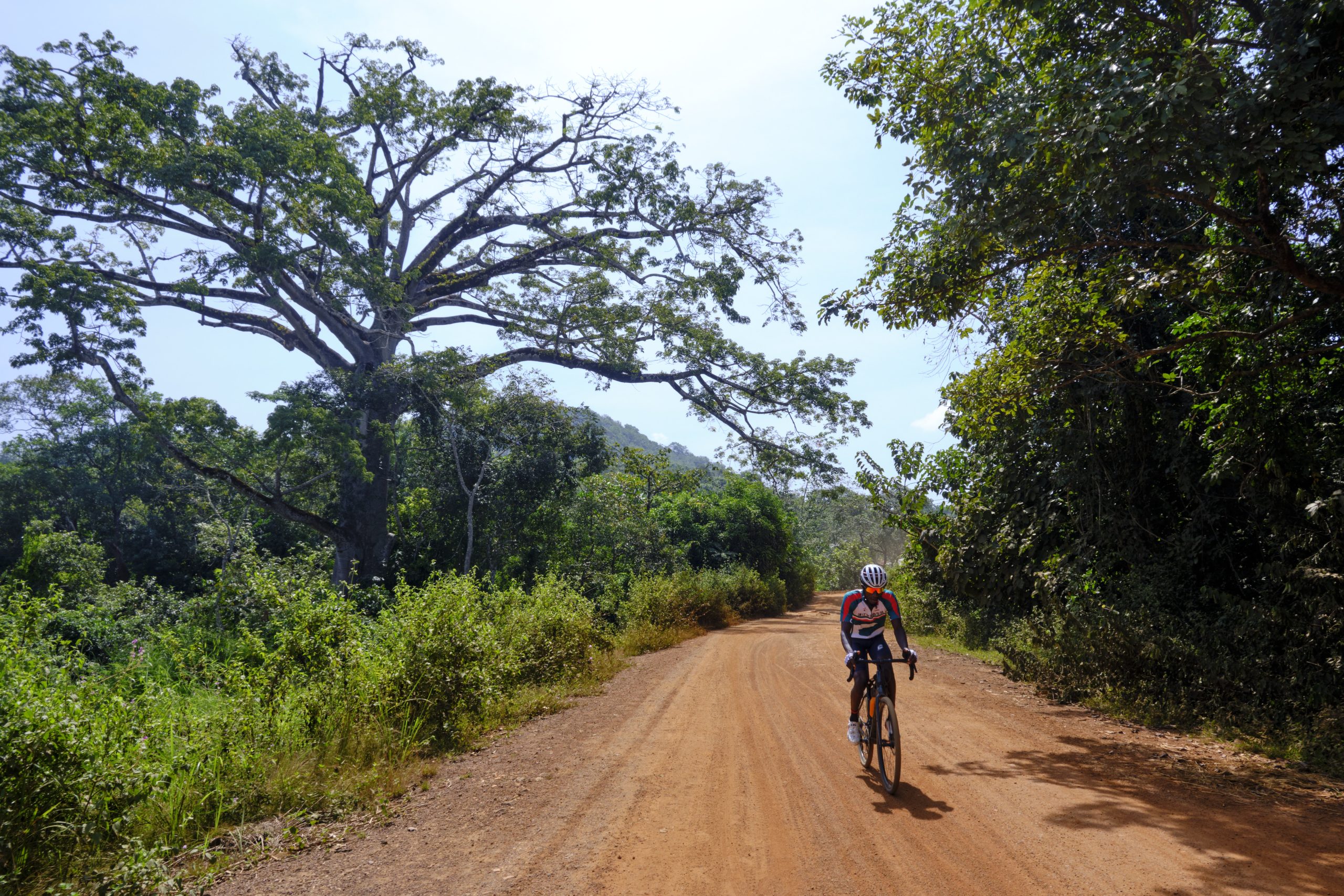
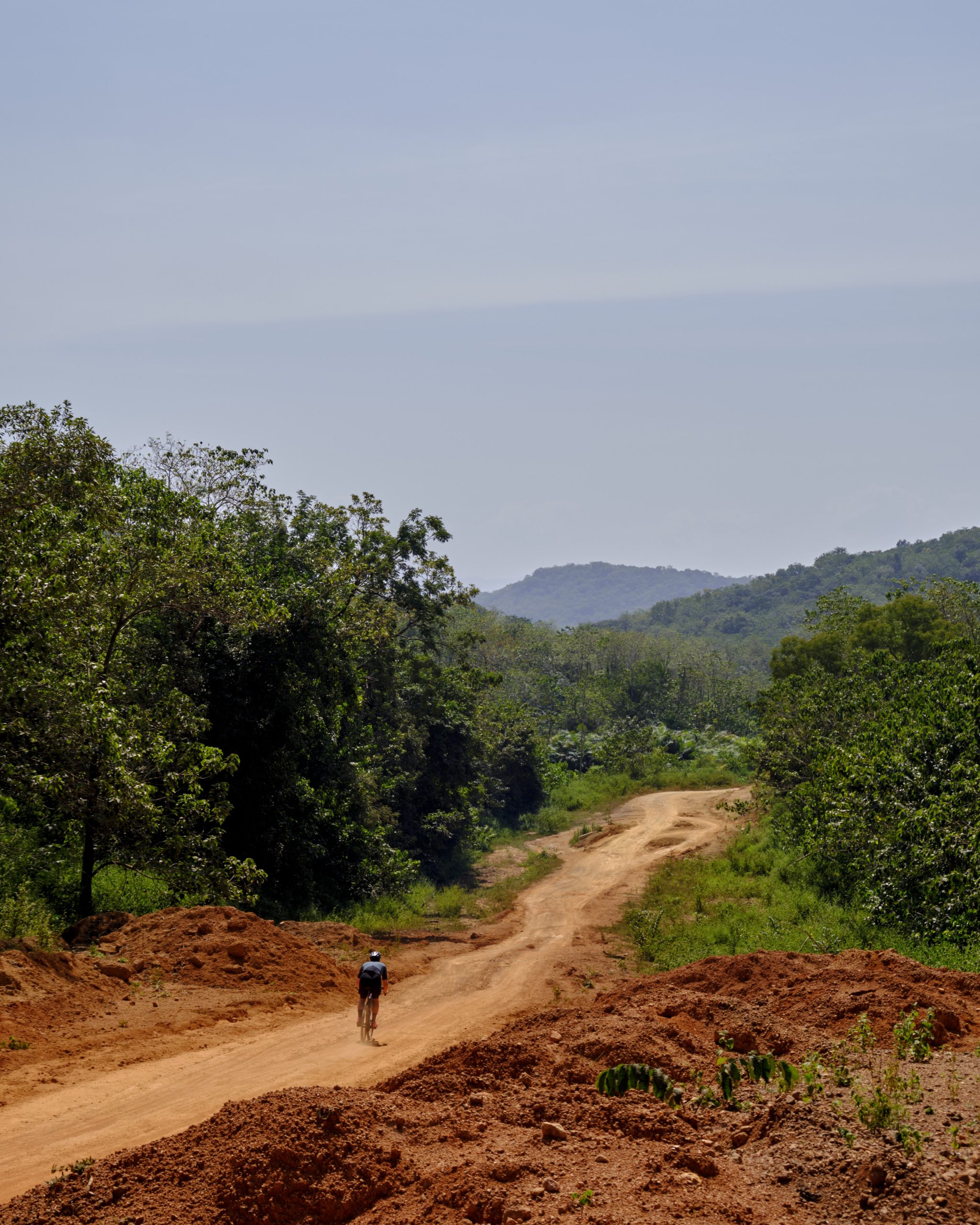
Journeys
The land of powerful mixtures
Photos: Abdul Hamid Kanu Jr
Words: Tom Owen
Alex reaches into the dirt and grabs a handful of shimmering particles. We’re standing in the morning sun, on a muddy road that leads to the villages outside Lunsar, Sierra Leone. Alex was born in one of these villages, and seems to recognise everyone we pass on the trail.
He lets the dirt fall from his fingertips; the shimmer is iron ore. The metal is so abundant in this part of Sierra Leone that you can pick handfuls of it off the ground. Rain the night before means our tyres lift it from the surface. The thick red mud – sparkling with metal and money – becomes caked on our down tubes and chain stays.
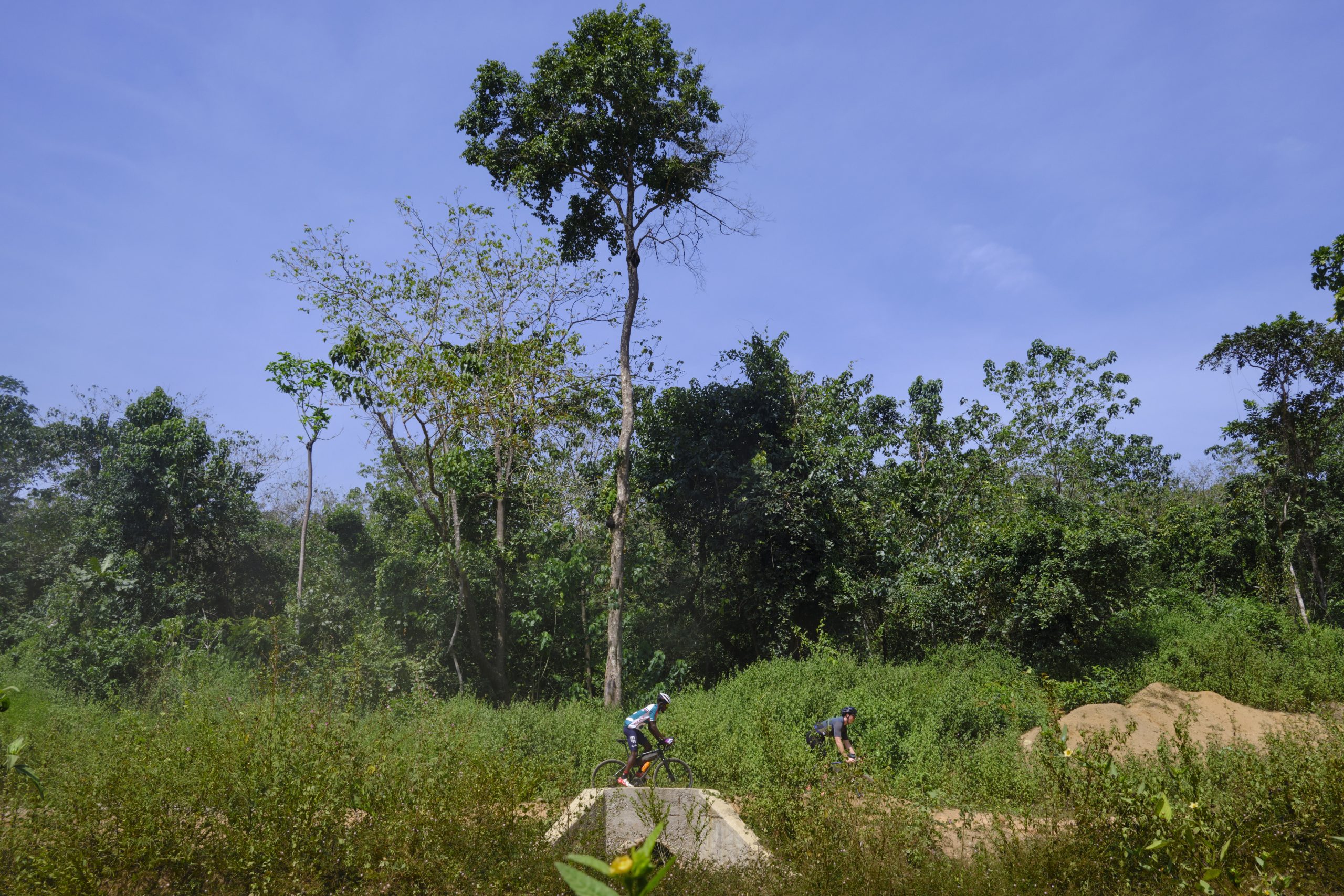
I have known Alex since 2019 when I first came to see the Tour de Lunsar, Sierra Leone’s biggest bike race. The day after the event, my host took me to an ataya base, a kind of hangout spot-meets-teahouse you see all over west Africa. The ones in larger towns might have a big telly for the football, but in the small one where Alex goes the entertainment comes from playing ‘draff’. It’s similar to draughts (checkers in the USA) but played on a larger board with more pieces, and Sierra Leonean men will often play it to determine who buys the other a cup of ataya, a kind of green tea. When I played Alex all those years ago he beat me remorselessly, laughing all the while. Since then we have been friends.
As we ride back into town, Alex expresses his frustration that it is so difficult to get a job at the iron mine. Like many in the community he is unemployed, and the mine is the biggest source of jobs in town by quite some margin. Jobs there come up rarely and are filled quickly.
The image of Alex’s fistful of ore will abide with me. This is the final morning of my visit, a quick exploration before packing my bike into its flight bag. In the preceding days I have ridden some of the most beautiful gravel roads of my life.
To discover what existed in the way of Sierra Leone gravel, I headed in-land in the company of a couple of racing cyclists from Sierra Leone. We moved away from the built-up Western Area – which is dominated by Freetown the country’s riotous, heaving capital city – and beyond Makeni, the last large town going north.
I planned a route that would venture into the far reaches of Sierra Leone that started from Makeni and headed north through Kabala towards Falaba, before turning back. Kabala is known as the land of the powerful mixtures, a reference to the fertile soils around the area. Fresh fruit and veg is abundant, with oranges being the current crop during my visit. The fruit was being sold on street-side stands everywhere, the pith ever so slightly bitter, but the juice itself deliciously sharp and sweet. The zing of citrus hung in the air of every town and village we stopped in.
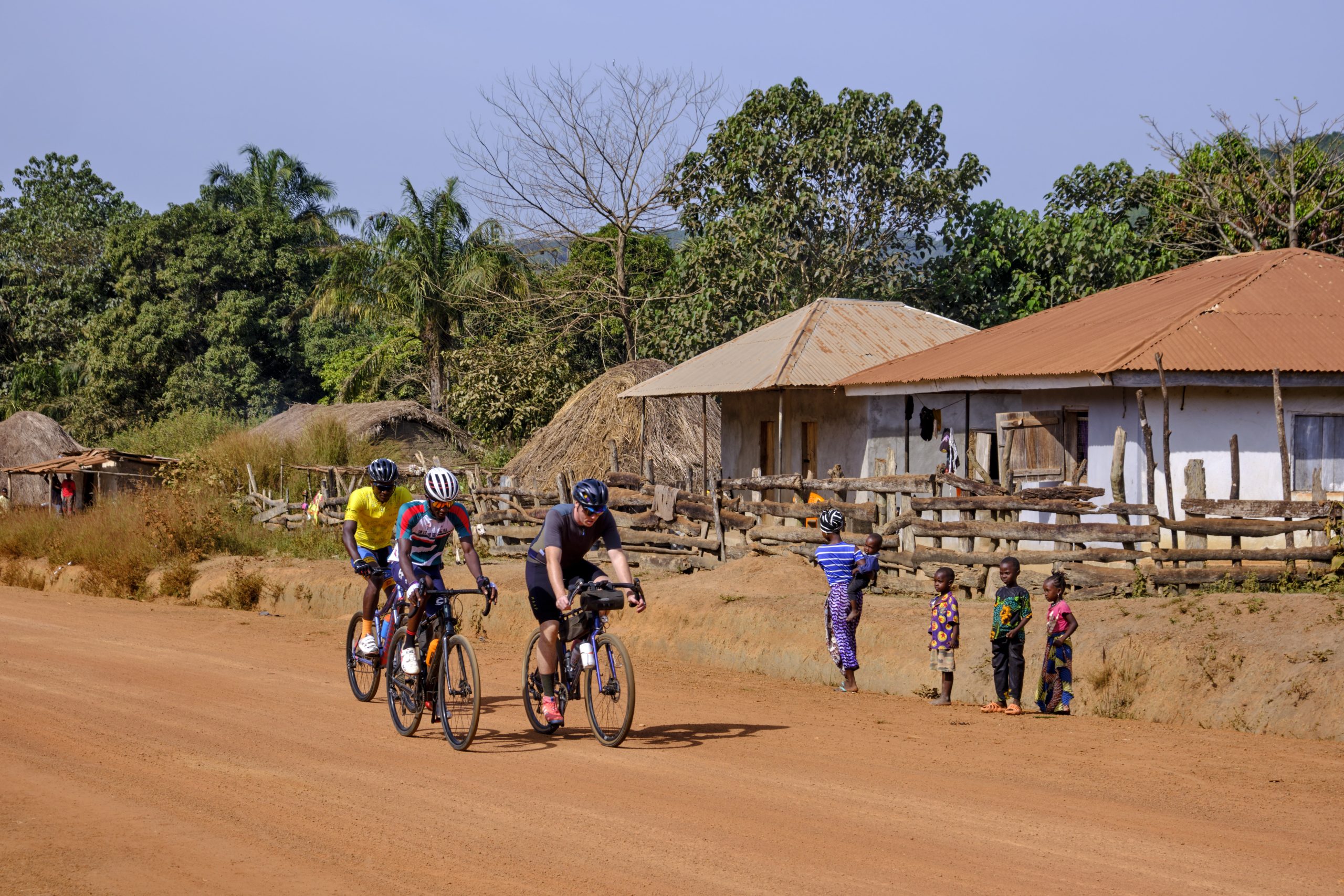
In English we’d describe the district of Kabala as a ‘bread basket’, reminiscent of the high, cool fields of Da Lat in Vietnam, the abundant fertility of the Salinas valley in California or, to a lesser extent, the vast industrially greenhoused growing zones of Almería in Spain.
But to a visitor, this idea of ‘powerful mixtures’ goes far beyond the soil. There is something in the air, something in the way the jungle seeks to take back the edges of the road. The way the humid heat is so delicately pierced by a brief gust of wind, the lightness of which you’d barely notice in another country; the combination of red dirt and the green foliage.
The road is paved to Kabala, albeit with a few gigantic potholes along the way, but soon after it turns to wide, levelled gravel. It is among the best I’ve ever ridden; flat and consistent and easy to carry speed on, with very few ruts and drains interfering with the surface.
It doesn’t last forever, though. It’s clear that the road is a work in progress, with the aim that it will eventually be tarmacked all the way to Falaba (and maybe beyond). Good roads help speed industry… whether that is for the ultimate good of the country or not.
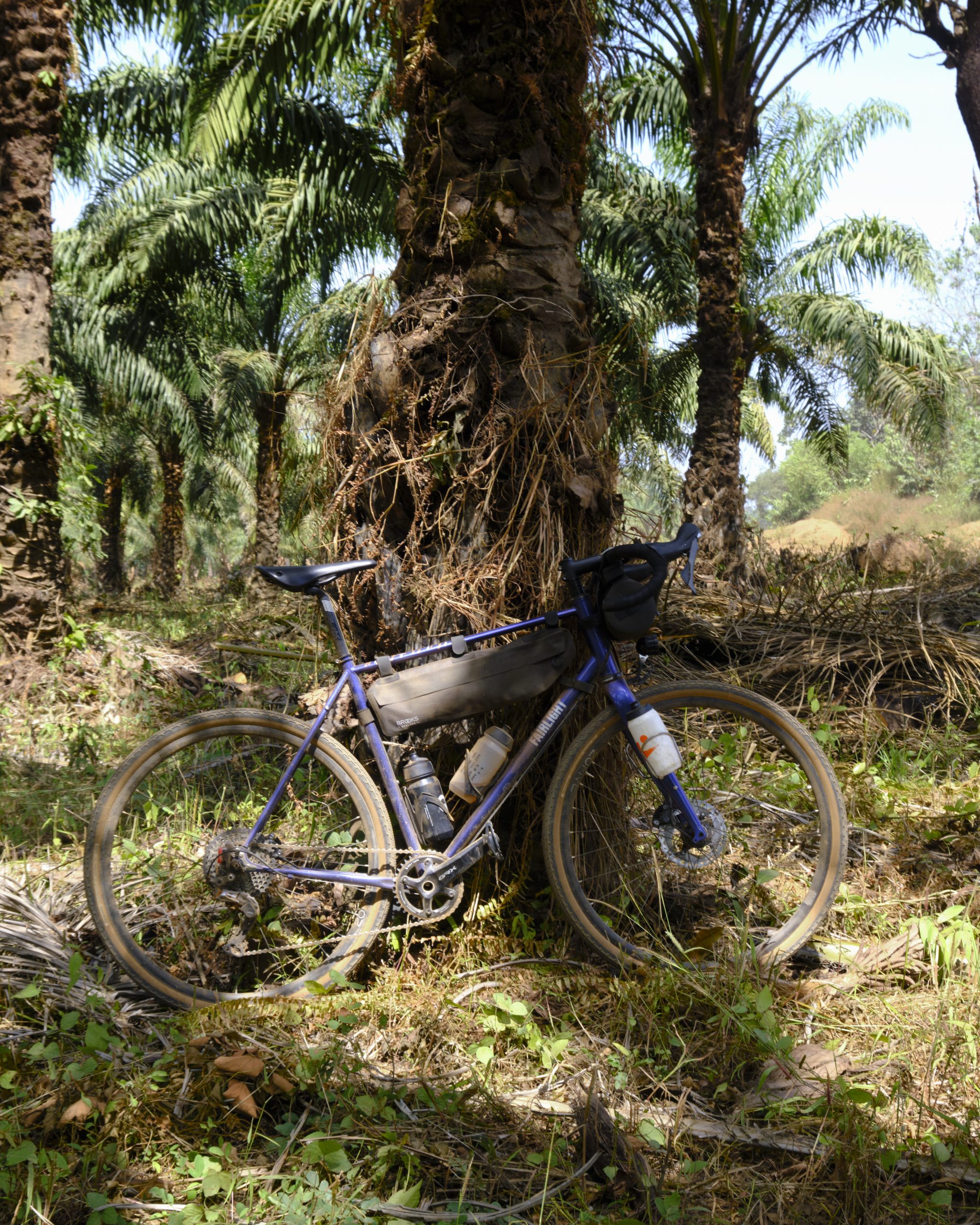
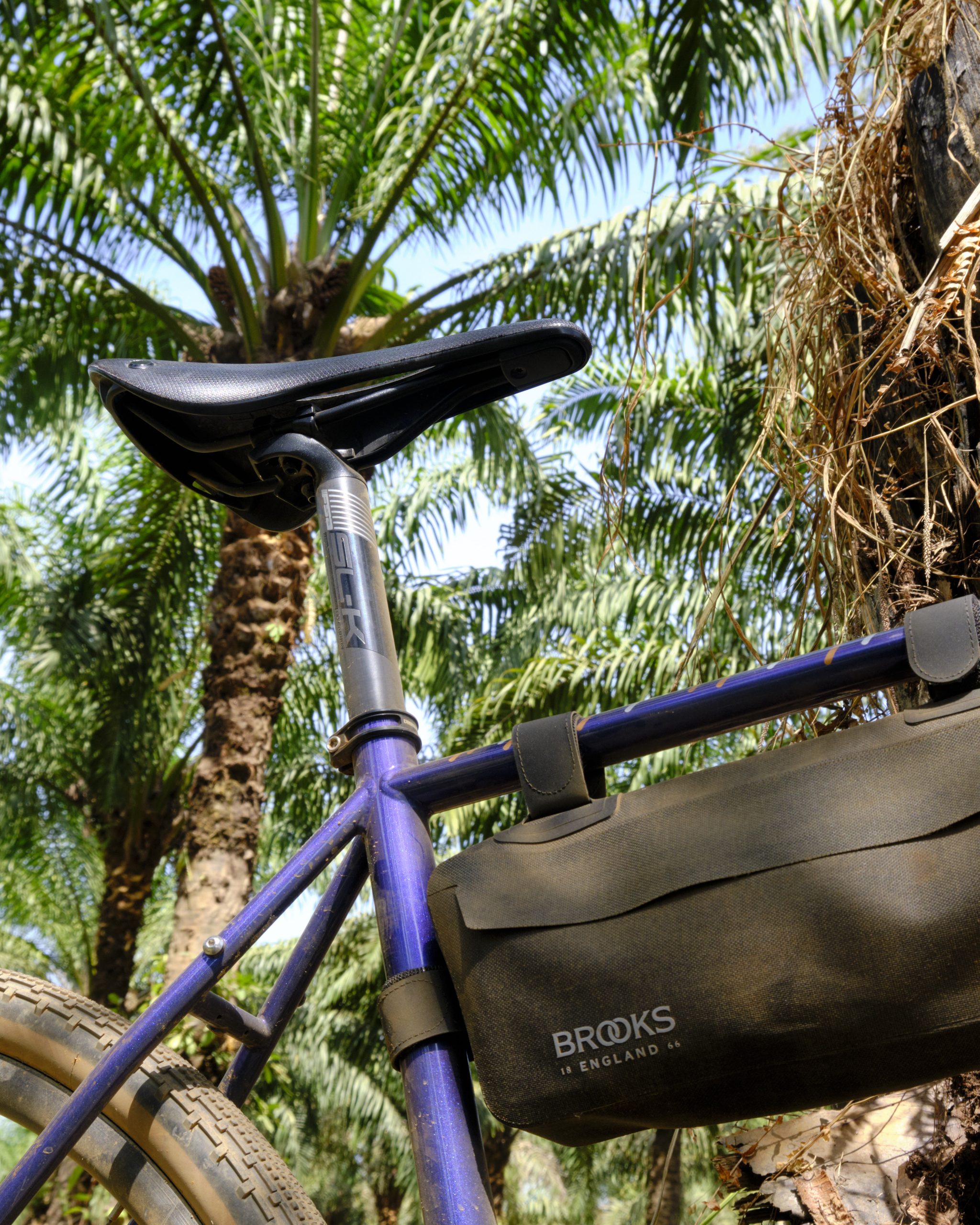
Virtually everywhere in Sierra Leone you see evidence of ‘extraction’. The removal of the country’s resources – be it iron ore, timber, gold or diamonds – is a huge business, just not for regular Sierra Leoneans. Some will have jobs working at the quarries and the mines, or else in driving the loads to the nearest point of exit from the country, but only a tiny fraction will see any of the profits that come from these lucrative industries.
It is saddening to know that the main reason this stunning gravel exists is to facilitate the movement of extracted resources. And that one day it will be gone, replaced with asphalt. If you want to ride them, don’t wait too long to visit.
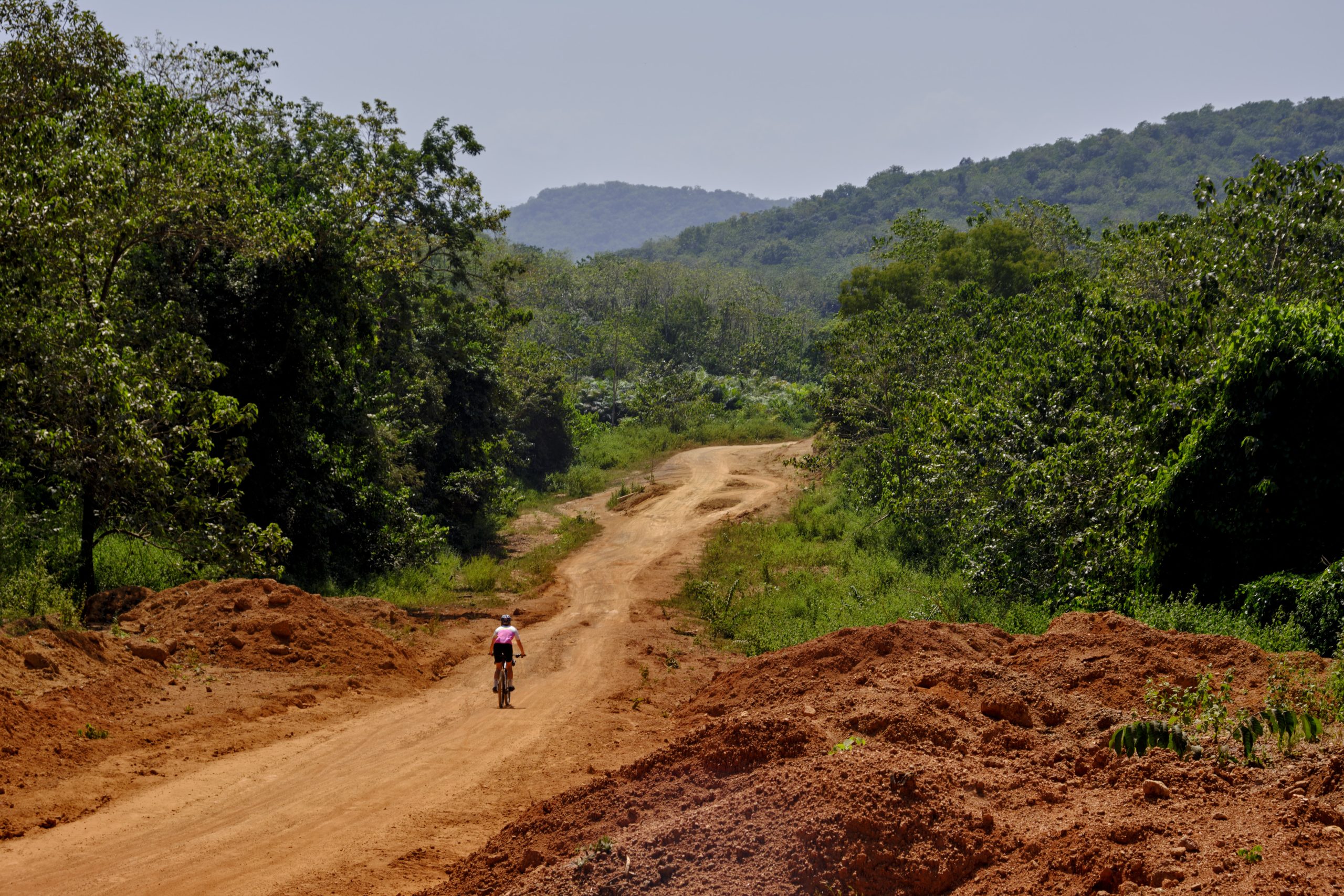
Sierra Leone abounds with life, whether it’s the din of town centre, or the peaceful jungled wilderness that makes up the country’s vast majority. Birds with feathers of electric blue flit around the treetops at the Lunsar iron mine. Somewhere near Mana, we drop into a flowy descent, rolling slowly to try and spot the best line through the craggy, lumpy surface, we hear a chimpanzee calling in the bush. Later at a spot where a stream flows over the roadway, having trickled through a riverbed of pebbles and sand, what seems like a hundred butterflies flutter in the air.
When I unpack my bike on the cold stone floor of my home in England. I notice, inside the flight bag, a silvery shimmer, harsh and bright. Like solid particles of equatorial sunshine. A scintilla of brilliant life. A memento of Sierra Leone.
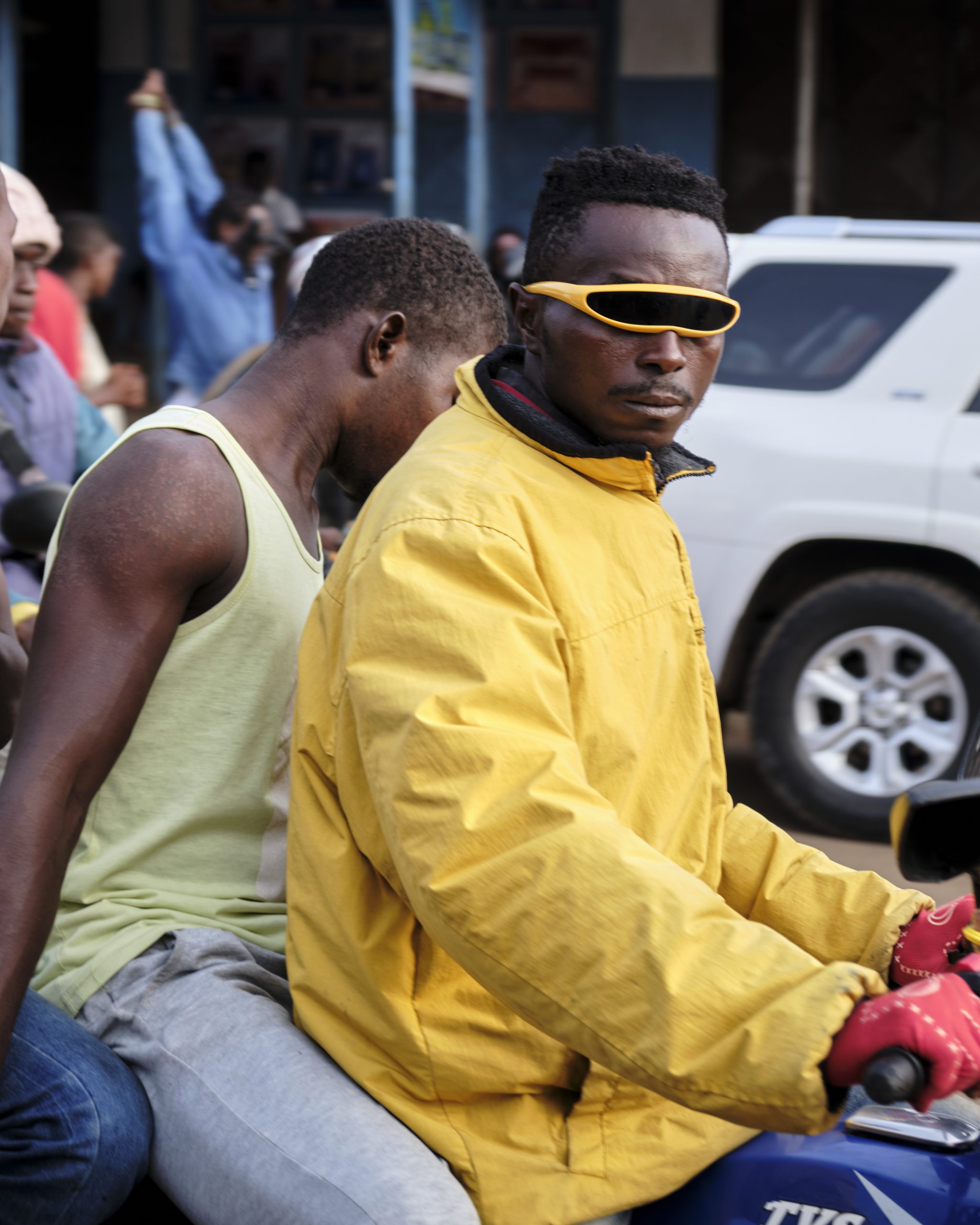
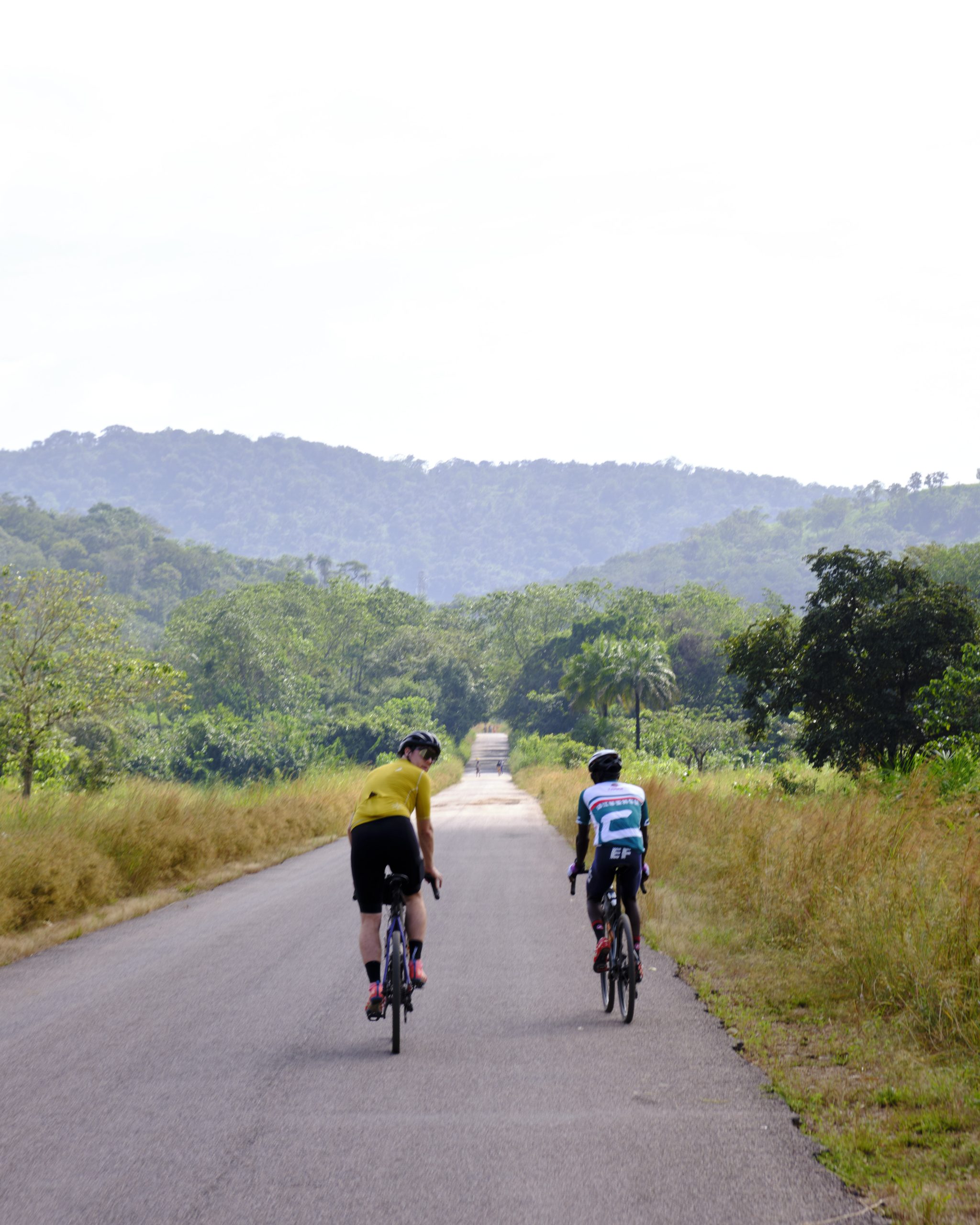
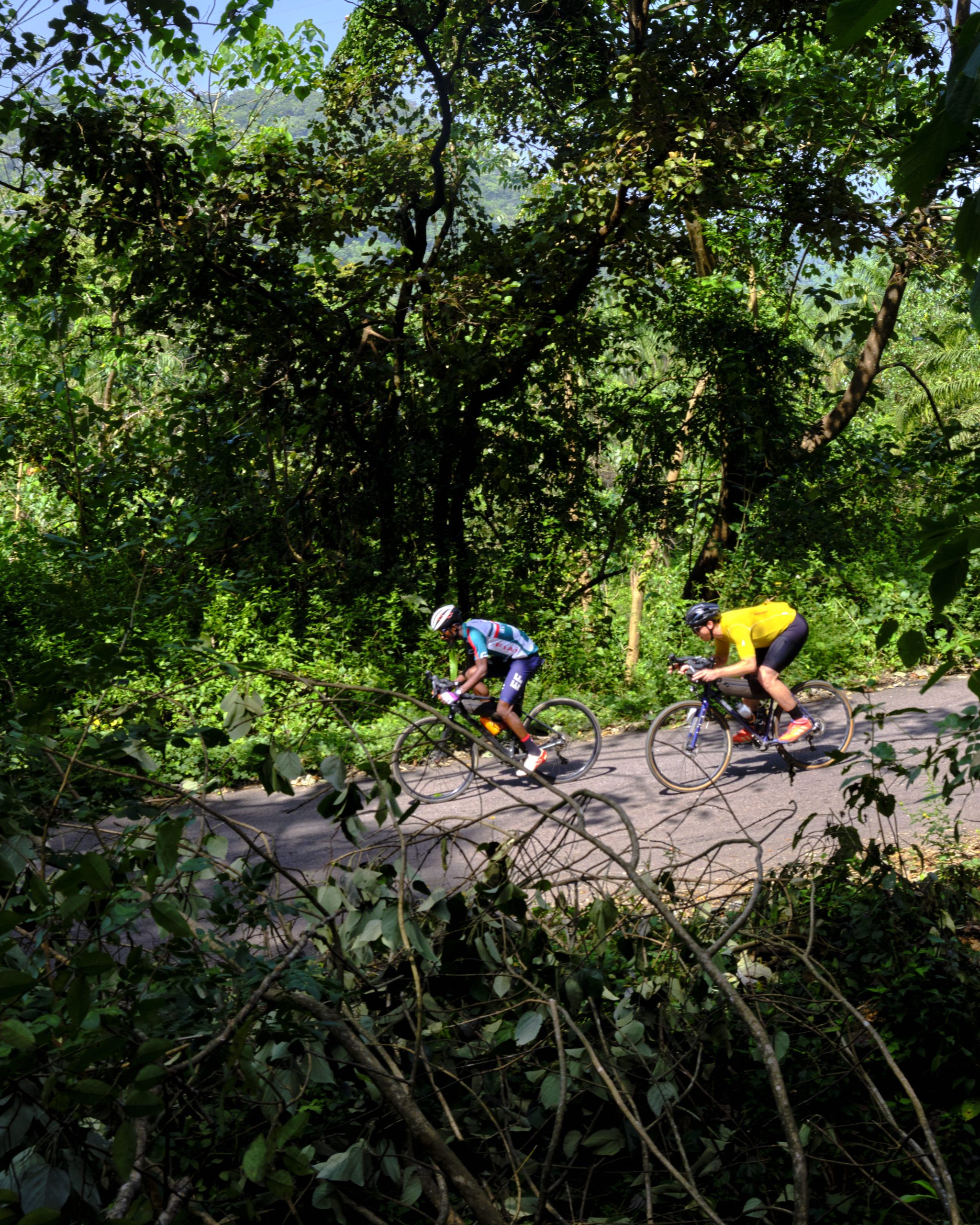
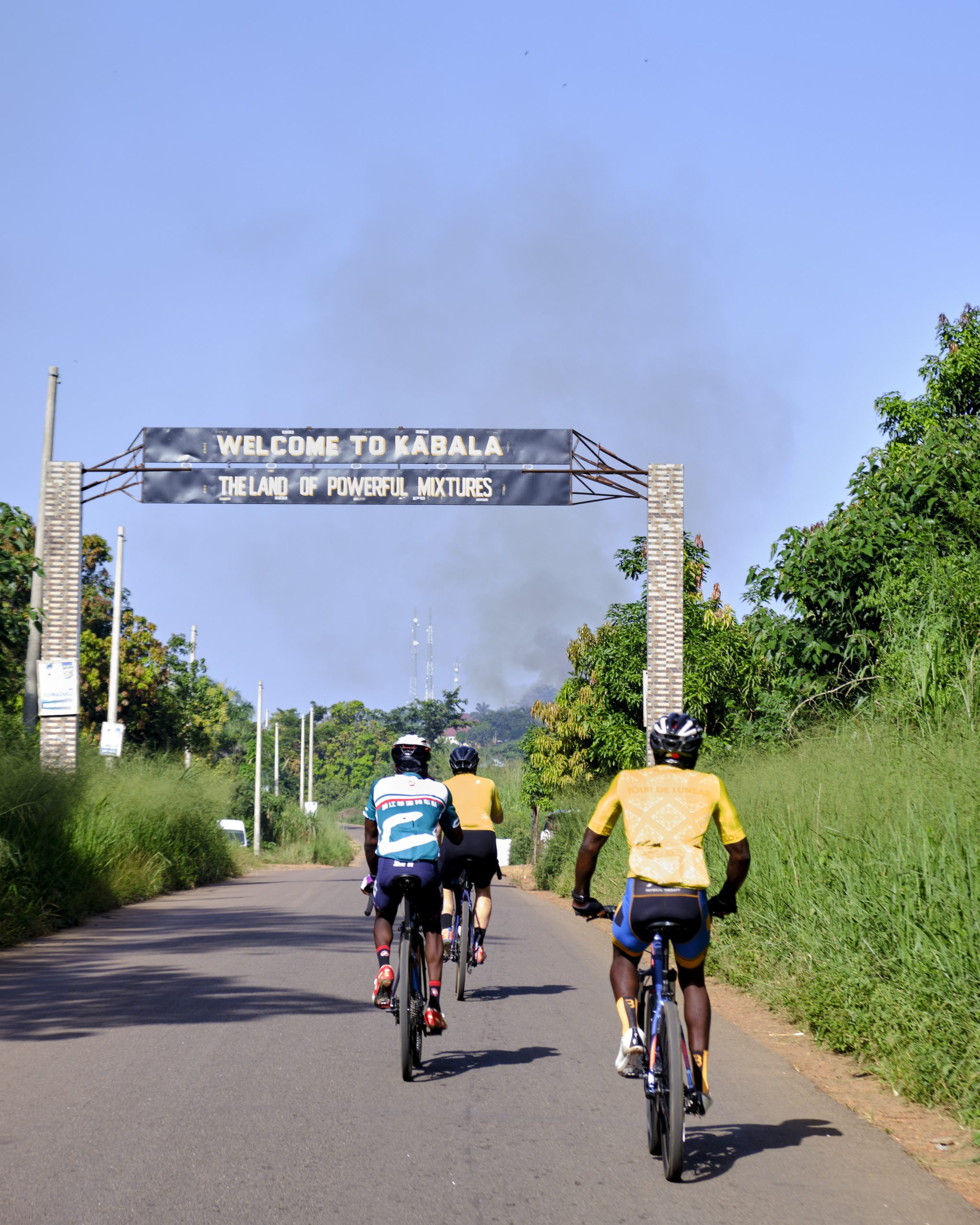
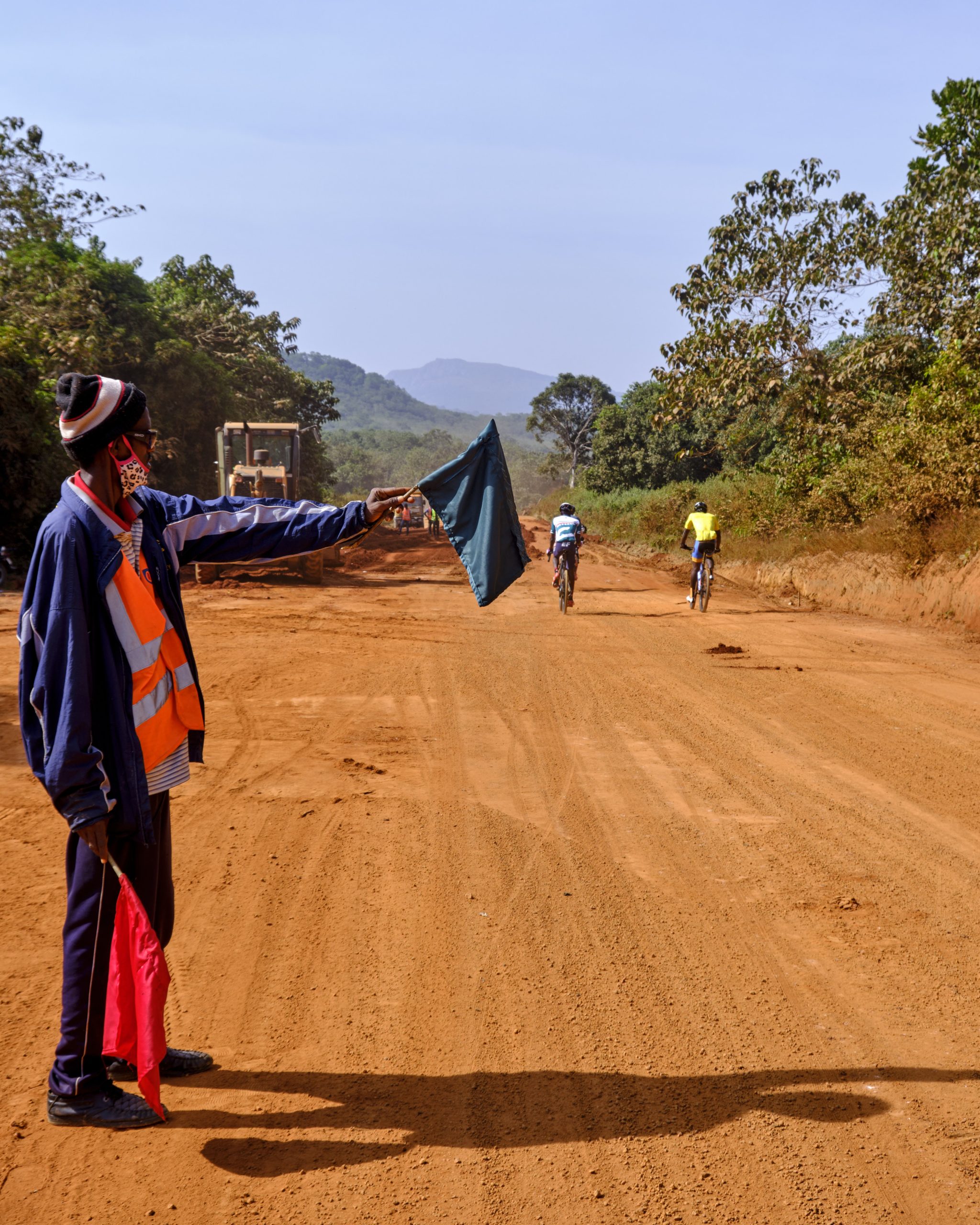
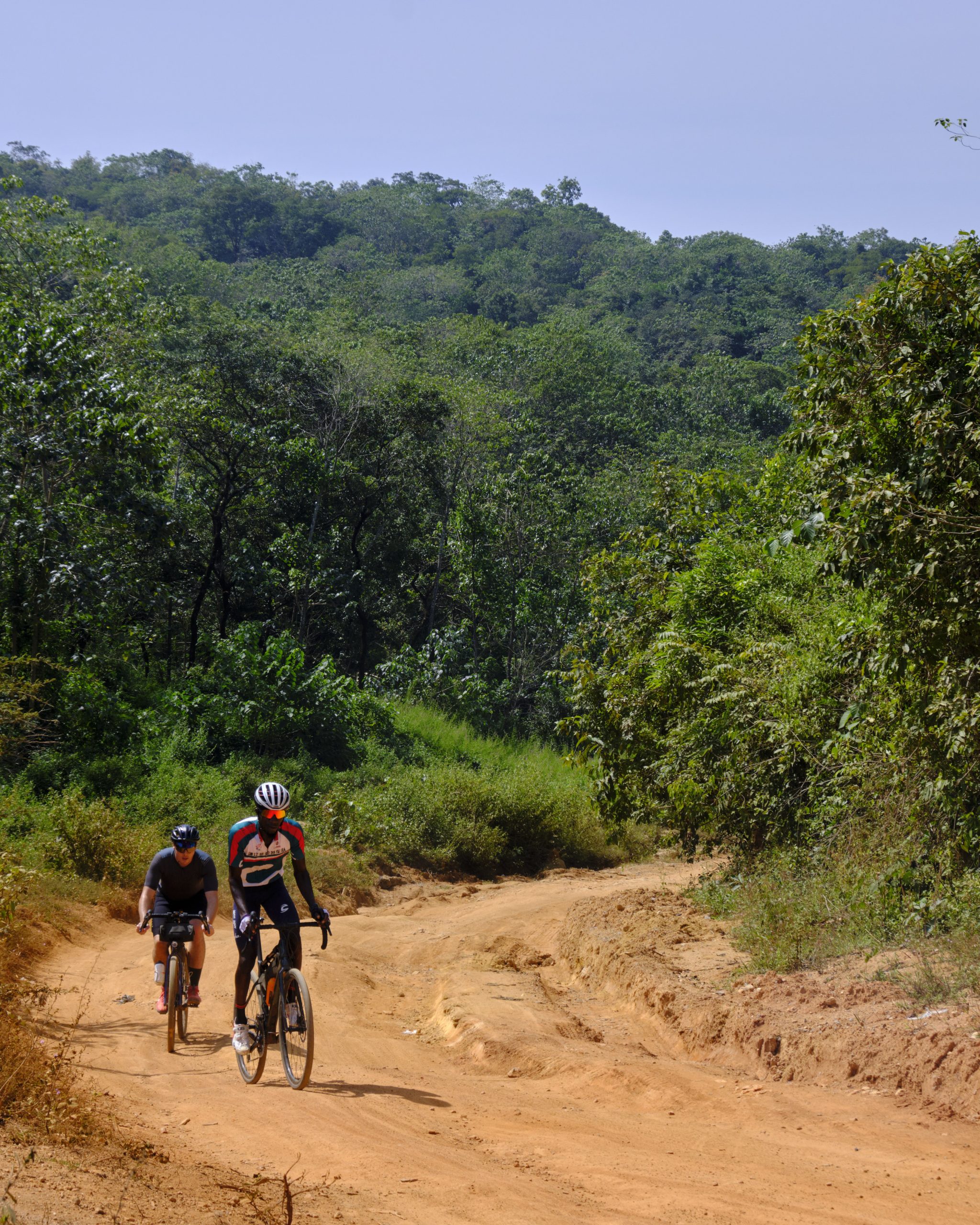
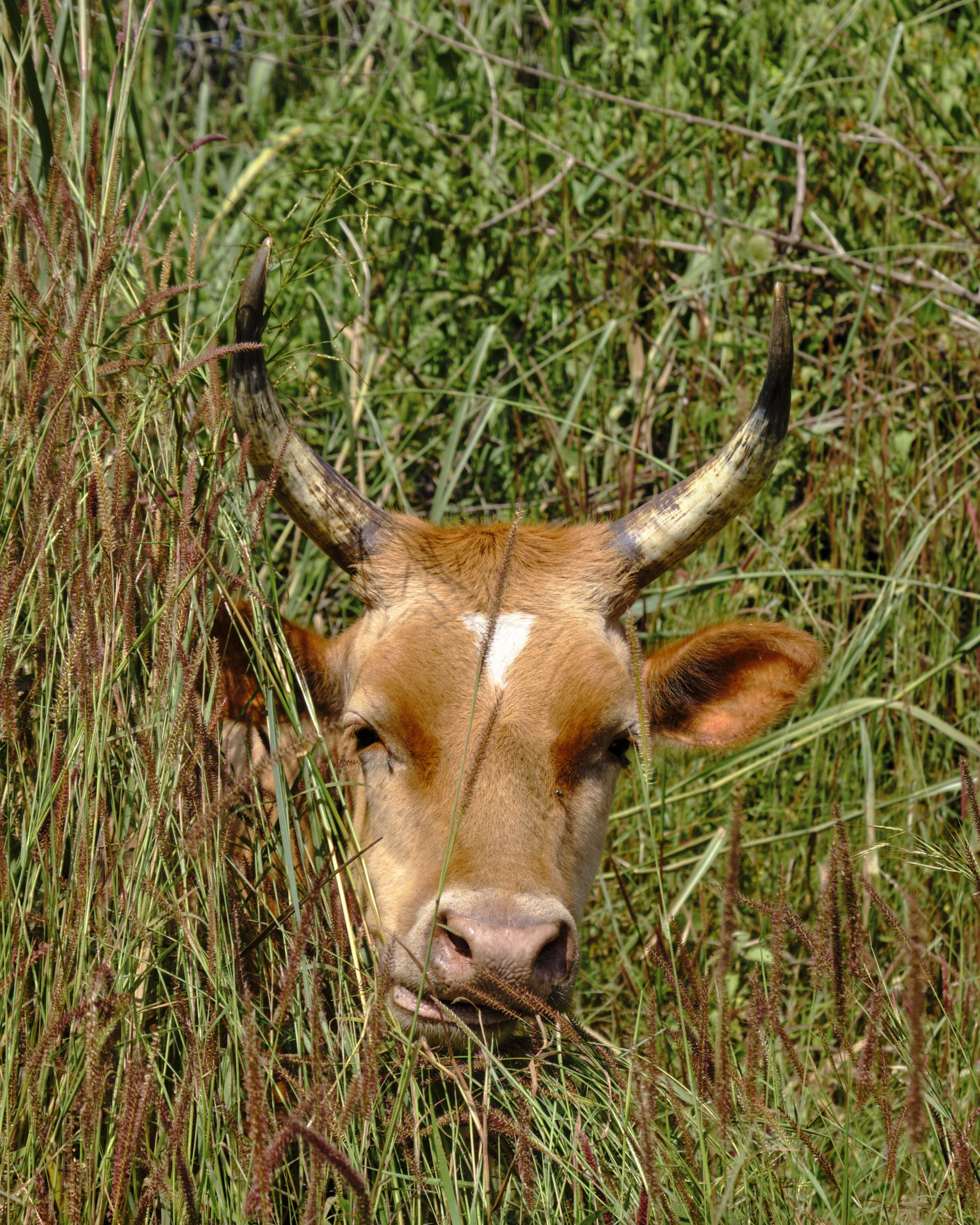
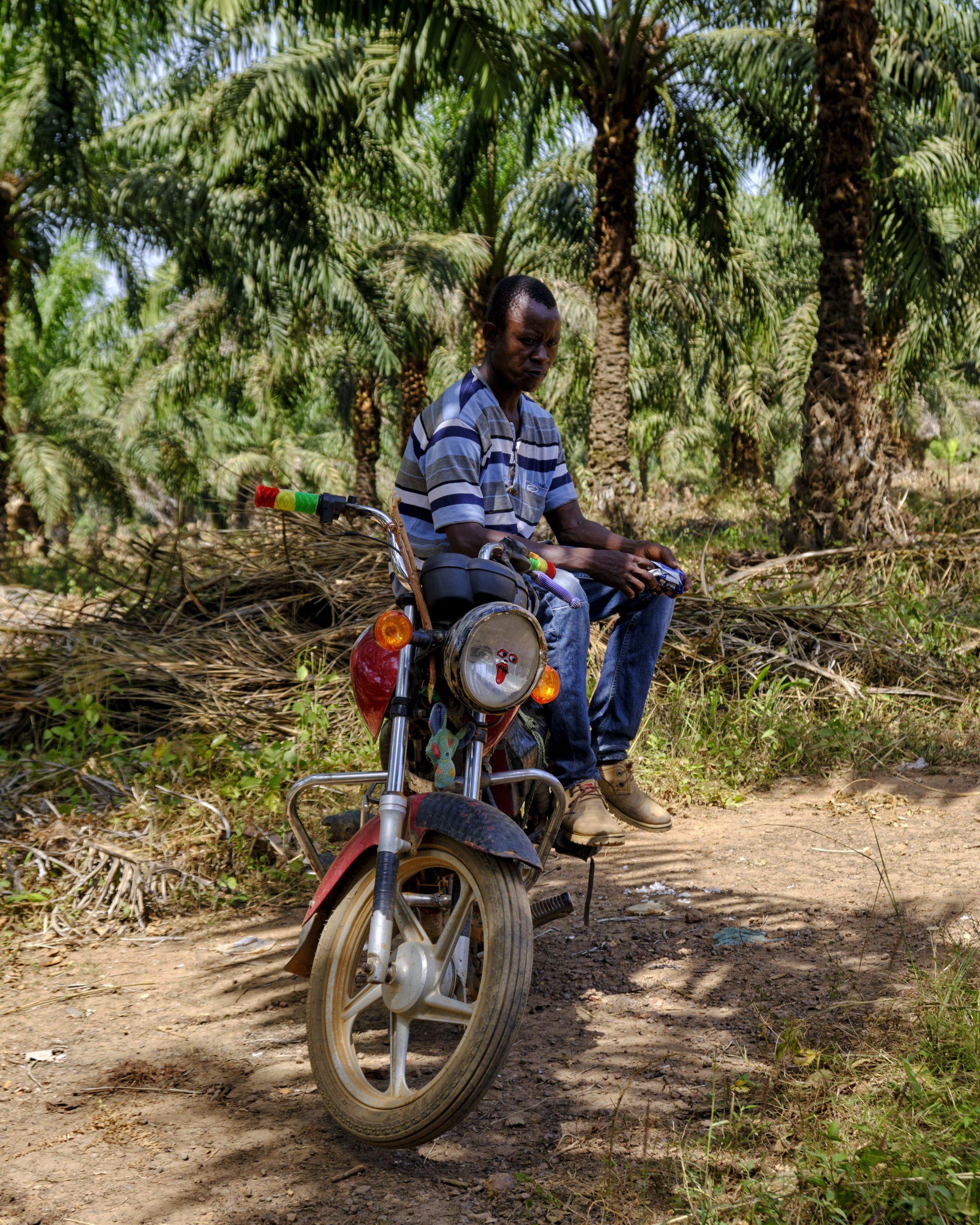
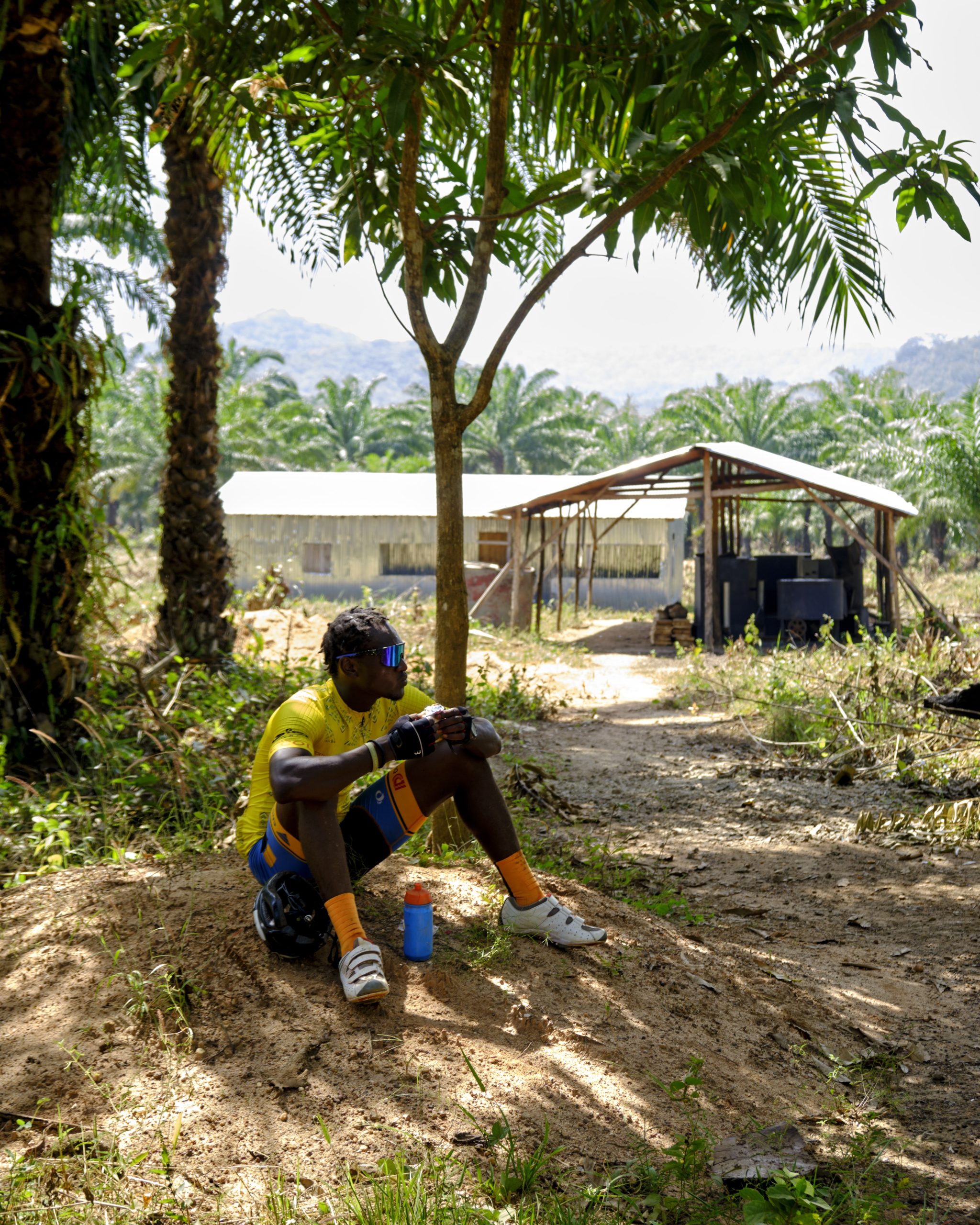
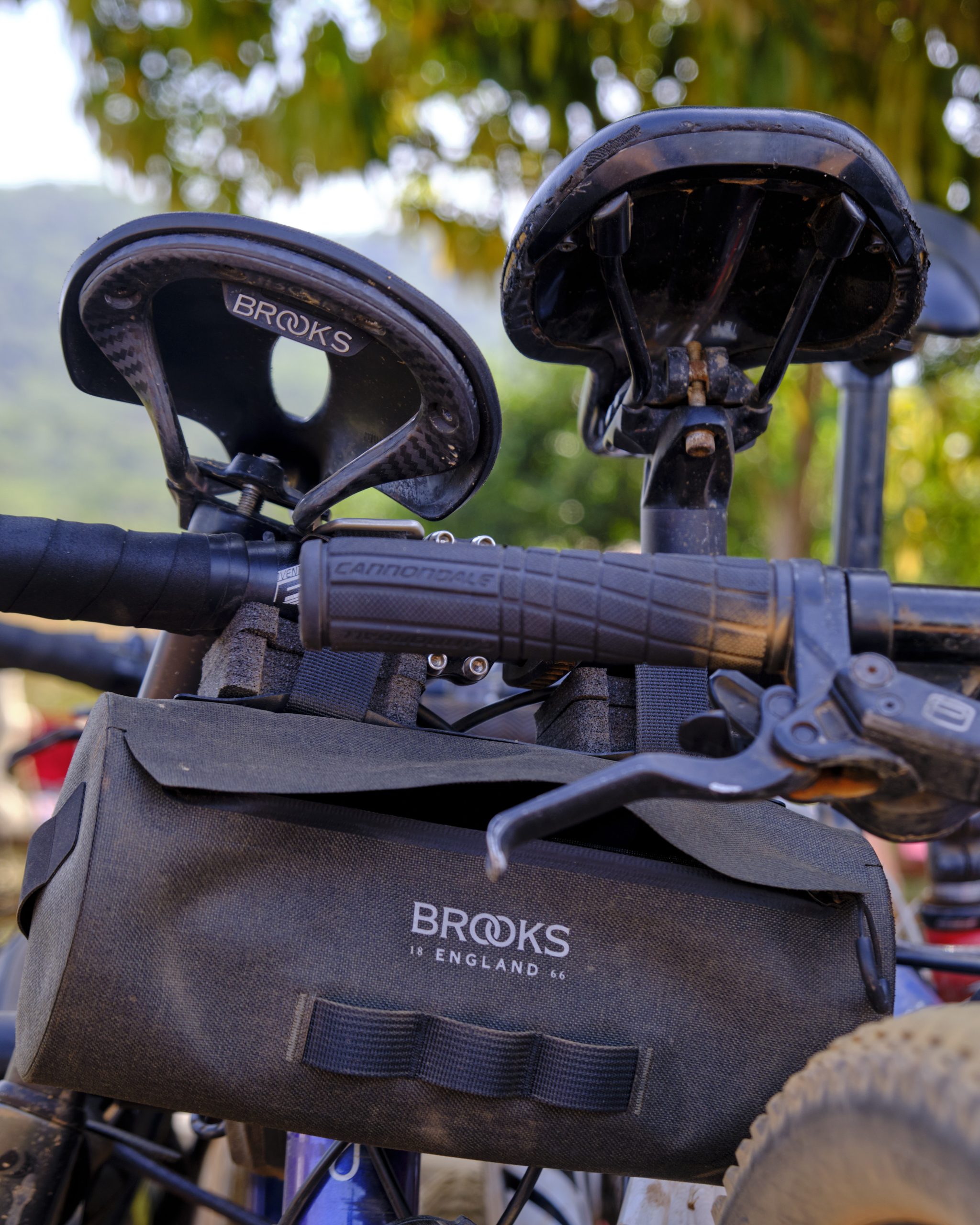
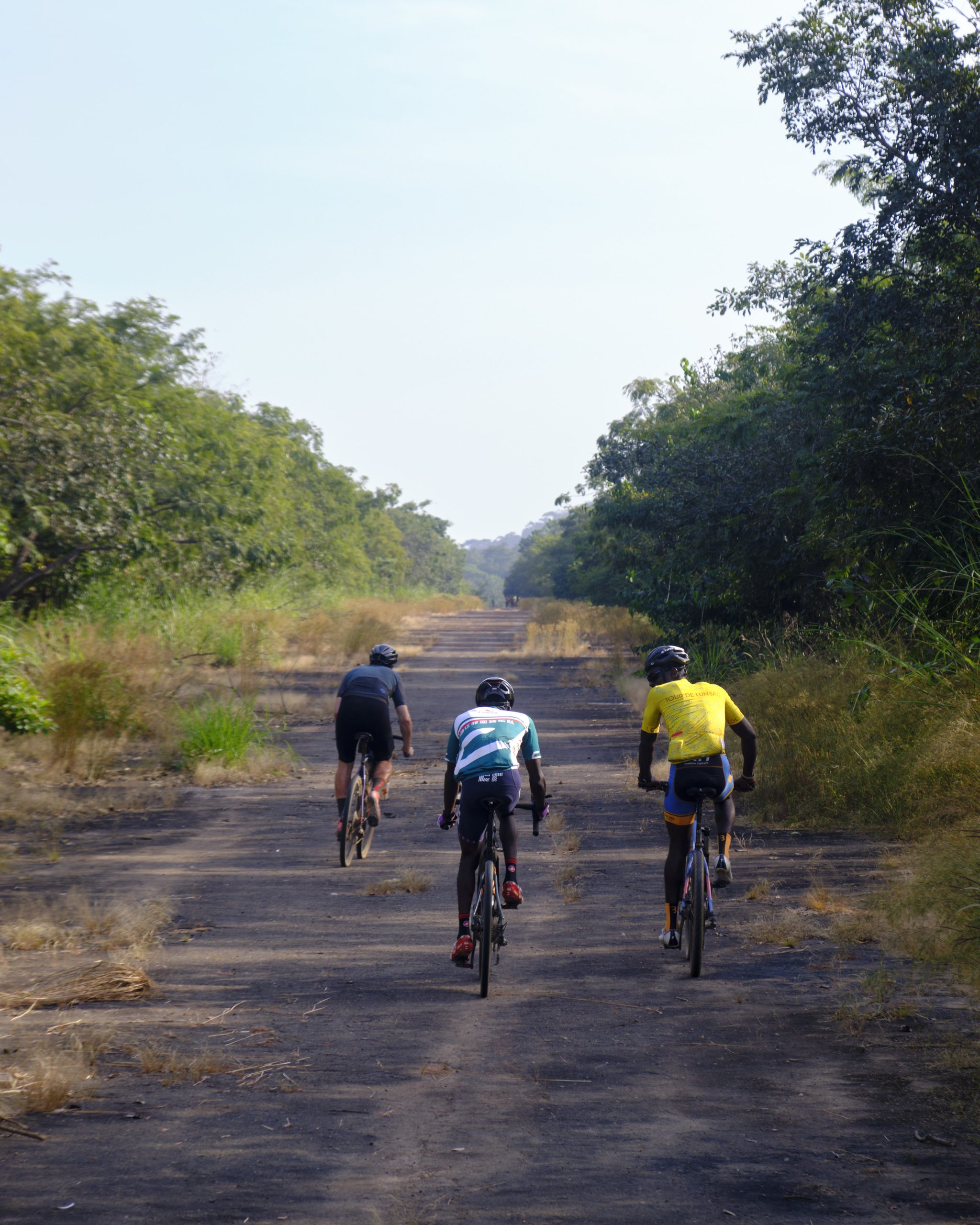
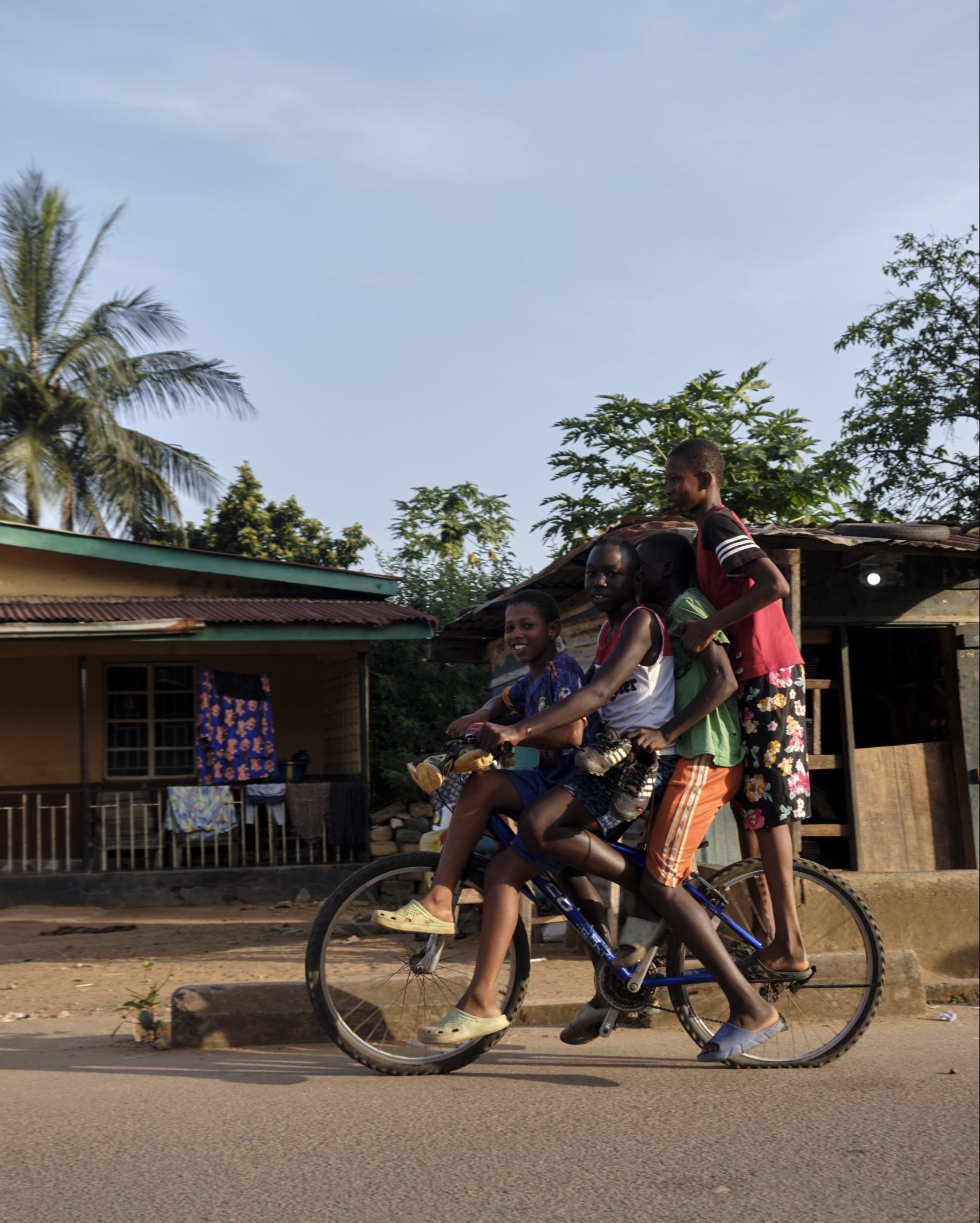
Sierra Leone gravel kit list
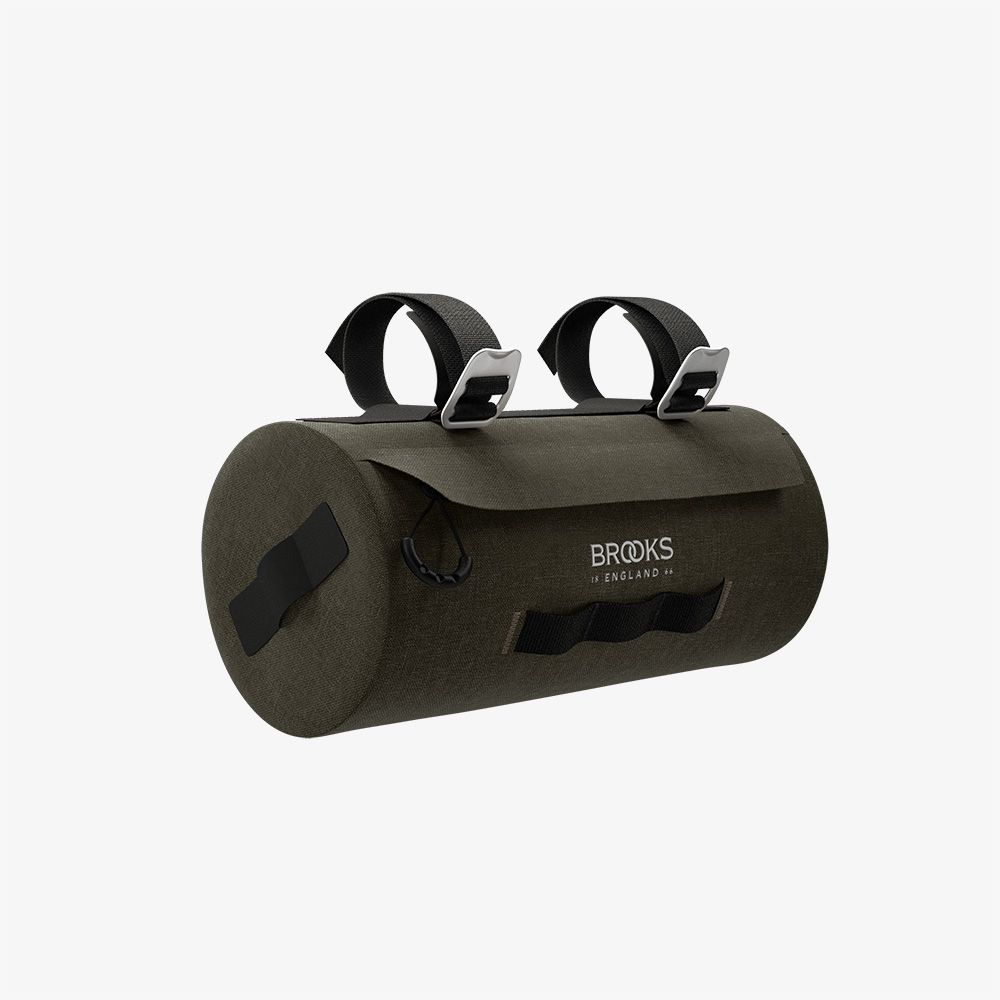
Scape Handlebar Pouch
The perfect gravel handlebar pouch for keeping snacks and tools within easy reach.
DISCOVER MOREMore Journeys Stories
The New Familiar
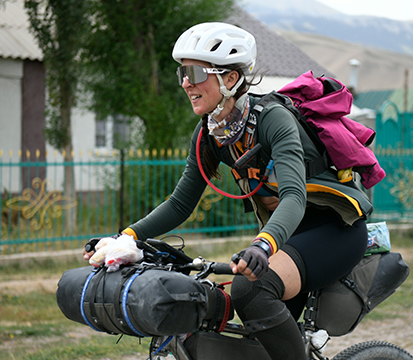
Riding the Silk Road Mountain Race with Eleanor Moseman.
READ MORE



